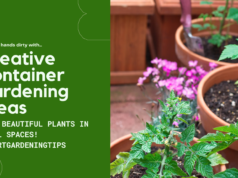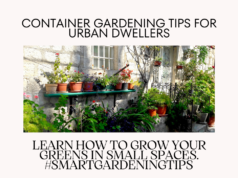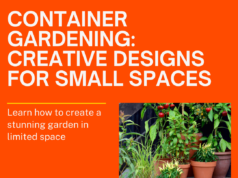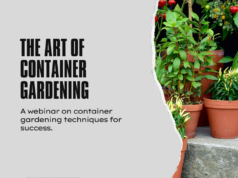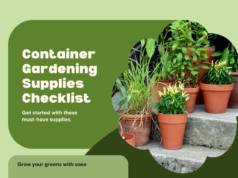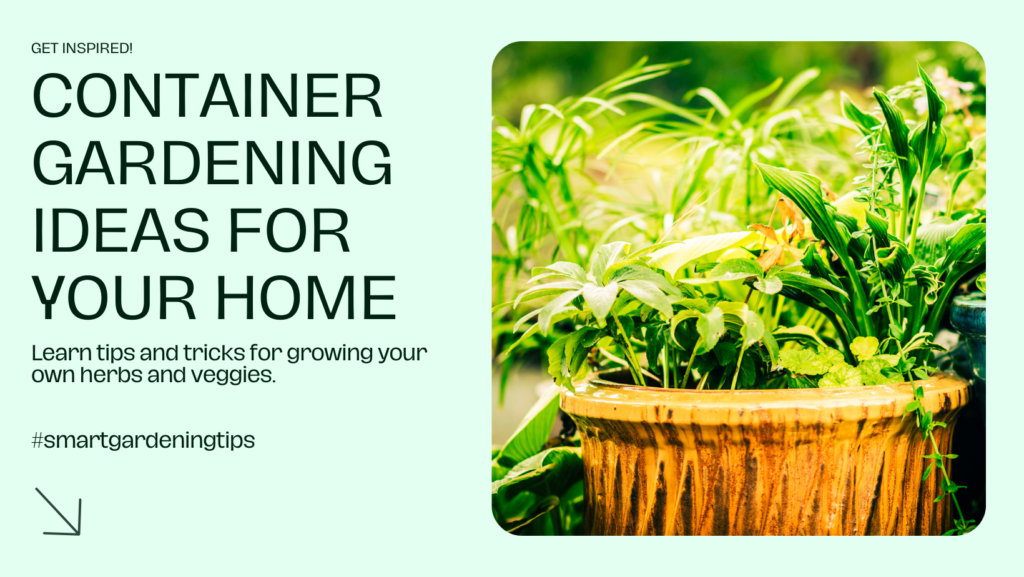
Welcome to the world of container gardening! Whether you have a spacious backyard or a cozy apartment balcony, container gardening is a fantastic way to bring greenery and beauty into your home. With just a little creativity and some basic knowledge, you can create a lush oasis that reflects your personality and style.
Container gardening offers numerous benefits. Not only does it allow you to grow plants in limited spaces, but it also provides flexibility in terms of design and placement. You can easily move your containers around to experiment with different arrangements and create focal points in your outdoor or indoor space.
In this article, we will explore a wide range of container gardening ideas to inspire and guide you on your gardening journey. From growing herbs and vegetables to cultivating colorful flowering plants, we will cover it all. We will also share maintenance tips, creative container ideas, and DIY projects to help you make the most of your container garden.
Key Takeaways:
- Container gardening is a great way to bring greenery and beauty into your home.
- Container gardening offers flexibility and allows you to grow plants in limited spaces.
- We will explore various container gardening ideas in this article.
- Get ready to unleash your creativity and create a vibrant oasis in your home.
- Stay tuned for maintenance tips, creative container ideas, and DIY projects.
Getting Started with Container Gardening
Are you ready to embark on a rewarding journey into the world of container gardening? This guide will provide you with essential tips and ideas to help you get started with your own lush and vibrant container garden.
Choosing Containers
When selecting containers for your container garden, it’s important to consider both functionality and aesthetics. Look for containers that have drainage holes to prevent waterlogging and choose materials like terracotta or plastic that provide adequate insulation for plant roots. Additionally, opt for containers that complement your home’s style and enhance the overall visual appeal of your garden.
Selecting the Right Soil
The key to a successful container garden lies in choosing the right soil mix. Use a high-quality potting mix that is lightweight, well-draining, and enriched with organic matter. This will ensure that your plants have the ideal growing conditions and receive the necessary nutrients to thrive. Avoid using garden soil, as it tends to be heavy and can lead to poor drainage in containers.
Planning the Layout
Before planting your container garden, take some time to plan the layout. Consider the sunlight requirements of the plants you want to grow and place them accordingly. Group together plants with similar water and light needs to make watering and maintenance easier. Create varying heights and textures by incorporating tall plants, trailing vines, and colorful flowers to add visual interest and depth to your container garden.
Tip: Don’t be afraid to experiment and think outside the box when planning your container garden. Mix different plant varieties, incorporate herbs and vegetables, and use vertical space with hanging baskets or trellises to maximize your garden’s potential.
Growing Herbs in Containers
Container gardening is not limited to just flowering plants and vegetables. It is also an excellent method for growing herbs right in your own home. Whether you have limited outdoor space or simply want to have fresh herbs readily available, growing herbs in containers is a convenient and rewarding solution. With the right techniques and care, you can have a flourishing herb garden that adds flavor and freshness to your culinary creations.
When it comes to growing herbs in containers, there are a few key considerations to keep in mind. First, choose a container that is suitable for the specific herb you wish to grow. Most herbs need well-draining soil, so opting for a container with drainage holes is essential. In terms of size, select a pot that allows for the herb’s root system to spread comfortably. Keep in mind that some herbs, like mint, can be quite invasive, so it’s a good idea to isolate them in their own container to prevent them from taking over.
Next, choose the right soil mix for your herbs. A good quality potting mix enriched with organic matter is ideal. This type of soil provides the necessary drainage and nutrients while retaining moisture to keep your herbs healthy. Remember to give your herbs enough sunlight. Most herbs thrive in full sun, so placing your containers in a location that receives at least six hours of direct sunlight each day is crucial for their growth and flavor development.
Proper watering is essential for the success of your container herb garden. Herbs generally prefer slightly moist soil but are susceptible to root rot if overwatered. To establish the right watering routine, check the moisture level of the soil regularly by inserting your finger about an inch deep into the pot. If the soil feels dry at that depth, it’s time to water. Additionally, using a self-watering container can help maintain consistent moisture levels.
Popular Herbs for Container Gardening
“The key to enjoying success with your container herb garden is to choose the right herbs that are well-suited for growing in confined spaces. Here are some popular herbs that thrive in containers:”
- Basil
- Rosemary
- Mint
- Parsley
- Thyme
- Cilantro
- Chives
- Oregano
These herbs are adaptable and do well in containers, both indoors and outdoors. They offer a range of flavors and are commonly used in various cuisines. By growing these herbs in your containers, you can enjoy their fresh taste and fragrance while also adding visual appeal to your garden.
Maintaining your container herb garden is relatively easy. Regularly prune your herbs to encourage bushier growth and prevent them from becoming leggy. Harvesting the leaves regularly will also promote new growth. Fertilize your herbs every four to six weeks using a balanced organic fertilizer to replenish the nutrients in the soil. This will ensure healthy and productive plants throughout the growing season.
With a little patience, care, and the right techniques, you can successfully grow a variety of herbs in containers, adding a touch of freshness and flavor to your culinary adventures.
Vegetable Container Garden Ideas
Incorporating vegetables into your container garden is not only a practical way to enhance your culinary adventures but also a creative solution for those with limited space. Whether you have a small balcony or a cozy patio, there are numerous vegetable container garden ideas to choose from that will bring fresh and flavorful produce to your fingertips.
Container Options for Your Vegetable Garden
When selecting containers for your vegetable garden, consider the size and depth requirements of different vegetables. Opt for containers that provide ample room for root development, drainage holes to prevent waterlogging, and durable materials that can withstand outdoor conditions.
Pro Tip: Repurposing items like old buckets, wooden crates, or even recycled plastic containers can add a unique touch to your vegetable container garden while reducing waste.
Here are some popular container options to consider:
- Traditional terracotta pots
- Grow bags or fabric containers
- Raised beds
- Window boxes or hanging baskets
- Vertical towers or trellises
These container options offer versatility in terms of space utilization and aesthetics, allowing you to create a visually appealing vegetable garden that complements your outdoor living area.
Best Vegetables for Container Gardening
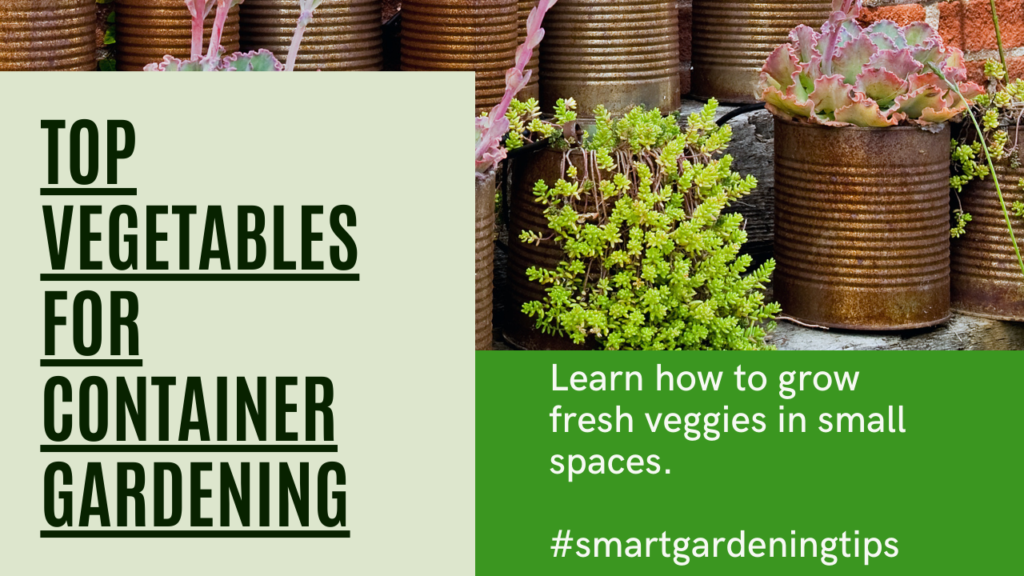
Not all vegetables thrive in containers due to space limitations and growth requirements. However, several varieties are well-suited for container gardening, providing an abundant harvest within a compact space. To ensure a successful and productive vegetable container garden, consider these vegetable options:
| Vegetable | Growth Habit | Container Size |
|---|---|---|
| Tomatoes | Vine | 5-gallon pot or larger |
| Peppers | Compact Bush | 5-gallon pot or larger |
| Lettuce | Rosette | 8-inch container or wider |
| Radishes | Rosette | 6-inch container or wider |
| Carrots | Root | 12-inch deep container or deeper |
| Green Beans | Vine | 8-inch container or wider with support |
These vegetables are known for their adaptability and suitability for container growth. Remember to provide adequate sunlight, water, and nutrients to help your vegetable garden thrive.
Pro Tip: Consider companion planting to maximize space and discourage pests. For example, interplanting parsley and tomatoes can help repel harmful insects while providing a flavorful combination for your dishes.
By carefully selecting the right containers and vegetables, you can design a bountiful and beautiful vegetable container garden that brings joy and sustenance to your home.
With a little creativity and planning, even the smallest spaces can be transformed into lush vegetable gardens. Whether you have a sunny balcony or a compact courtyard, these vegetable container garden ideas will inspire you to grow your own fresh produce and experience the joy of nurturing your plants from seed to table.
Colorful Flowering Plants for Containers
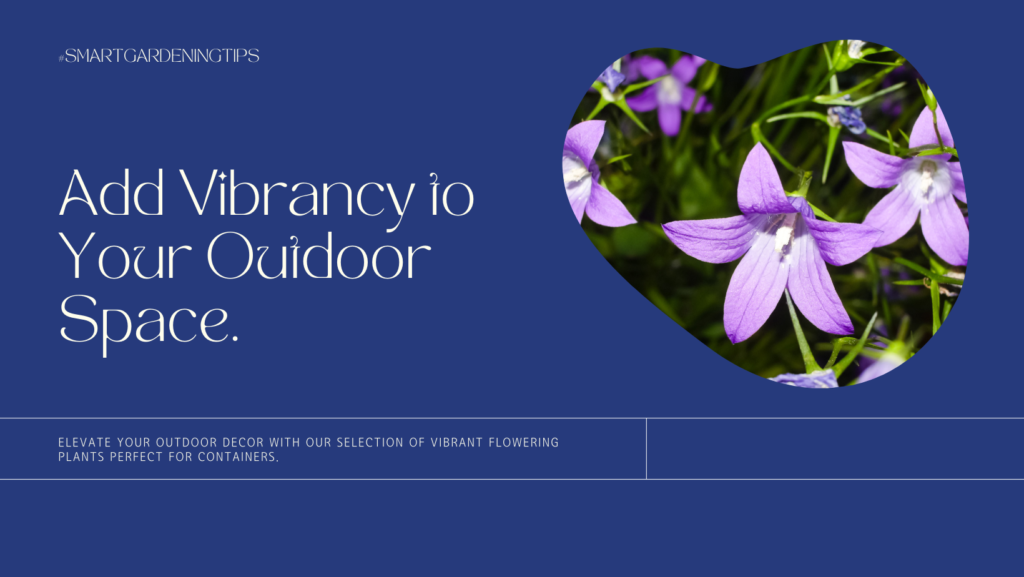
When it comes to container gardening, one of the most delightful aspects is the ability to create vibrant displays of colorful flowering plants. These plants add beauty, charm, and a touch of nature to any outdoor space, whether it’s a small balcony, a cozy patio, or a spacious garden. With a wide variety of flowers and plants to choose from, you can easily create a stunning container garden that will brighten up your surroundings.
When selecting colorful flowering plants for containers, it’s important to consider the specific needs of each plant to ensure they thrive in a confined space. Some popular options include:
- Petunias: These annuals are known for their large, trumpet-shaped flowers that come in an array of vibrant colors. They are easy to grow and provide continuous blooms throughout the summer.
- Geraniums: With their clusters of brightly colored flowers, geraniums are a classic choice for container gardens. They come in various shades of red, pink, and white, adding a pop of color to any arrangement.
- Marigolds: Known for their cheerful, daisy-like blooms, marigolds are an excellent choice for containers. They come in different shades of orange and yellow, bringing warmth and vibrancy to your garden.
- Begonias: These versatile plants produce beautiful flowers in shades of red, pink, white, and orange. They thrive in both sun and shade, making them a popular choice for containers in any location.
- Impatiens: Ideal for shady spots, impatiens are shade-loving plants that produce clusters of colorful, delicate flowers. They are available in various shades of pink, white, purple, and red.
To ensure your flowering plants thrive in containers, it’s important to choose the right container size and provide proper care. Consider the mature size of the plants and select containers that allow enough room for root growth. Use well-draining potting soil and ensure containers have drainage holes to prevent waterlogging. Regular watering, fertilization, and deadheading of spent flowers will encourage continuous blooming throughout the season.
“Container gardens offer endless possibilities for bringing beautiful and colorful blooms to your outdoor space. Whether you prefer a mix of vibrant annuals or a collection of elegant perennials, there’s no shortage of options to explore. Let your creativity shine and experiment with different combinations to create your own stunning display of colorful flowering plants.”
Best Plants for Small Spaces
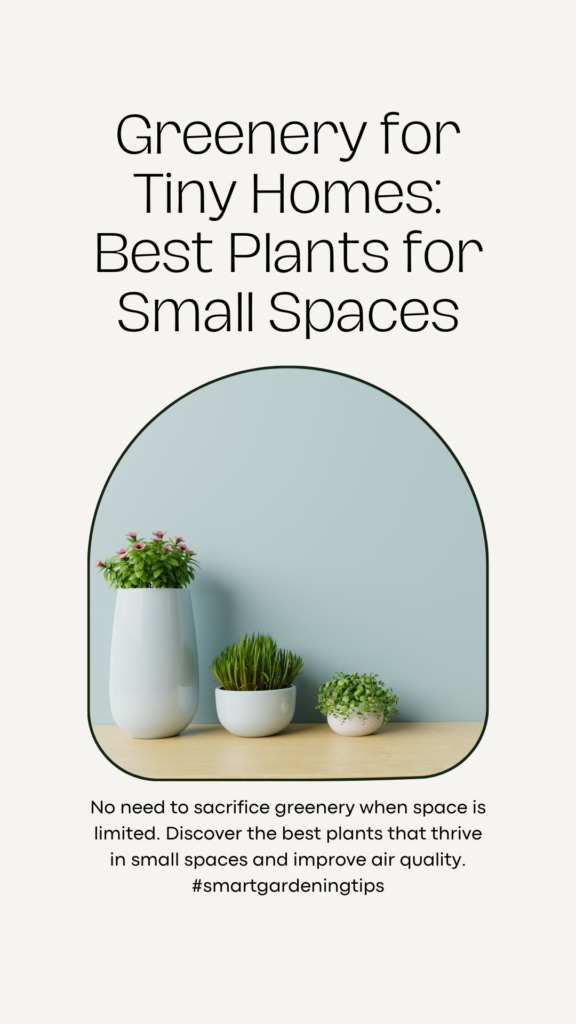
If you have limited space in your home, such as a balcony or windowsill, you can still enjoy the beauty and benefits of gardening. Choosing the right plants that thrive in small spaces is key to creating a lush oasis in even the tiniest corners of your abode.
When it comes to the best plants for small spaces, you want varieties that are compact, low-maintenance, and visually appealing. Here are some recommendations to help you make the most of your limited gardening area:
1. Succulents
With their unique shapes and drought resistance, succulents are perfect for small spaces. They come in a wide range of colors and textures, making them a versatile choice for adding visual interest to your balcony or windowsill. Plus, their ability to store water in their leaves means they require minimal watering, making them ideal for busy individuals.
2. Herbs
Not only do herbs provide delicious flavors for your kitchen, but they also make excellent choices for small-space gardening. Compact varieties like basil, thyme, and rosemary thrive in containers and can be easily grown on a windowsill or balcony. Imagine stepping outside to pick fresh herbs for your meals—nothing beats that!
3. Dwarf Citrus Trees
If you dream of picking your own homegrown lemons or oranges, you’ll be delighted to know that there are dwarf citrus tree varieties specifically designed for small spaces. These trees can be grown in pots and kept on your balcony, providing fragrant blossoms and delicious fruits to savor.
4. Petunias
When it comes to adding vibrant colors to your small-space garden, petunias are a top choice. These flowering plants are known for their ability to cascade over the edges of containers, creating a beautiful display of trailing blooms. With various colors to choose from, petunias can brighten up any small garden space.
5. Pothos
If you’re looking for a low-maintenance plant that thrives in low-light conditions, consider pothos. This trailing vine is perfect for indoor gardening and adds a touch of greenery to any small space. Pothos is also known for its air-purifying qualities, making it an excellent choice for improving indoor air quality.
Remember, when gardening in small spaces, it’s important to choose containers that suit the size and growth habits of your plants. Pay attention to proper watering and ensure adequate sunlight for optimal plant growth.
“Even with limited space, you can create a stunning garden that brings joy and beauty to your home.” – Gardening Enthusiast
By selecting the best plants for small spaces, you can transform your balcony or windowsill into a thriving green sanctuary. Experiment with different plant combinations and create your own mini garden paradise. Happy gardening!
Creative Container Ideas

Looking for unique and creative ways to enhance your container gardening? Get ready to be inspired with these creative container ideas that will transform your garden into a stunning oasis. By repurposing everyday objects, you can give your plants a new home while adding a touch of charm and personality to your outdoor space.
Repurposing Containers for Gardening
“One man’s trash is another gardener’s treasure.” – Unknown
When it comes to creative container ideas, the possibilities are endless. Instead of traditional plant pots, consider repurposing old items to create one-of-a-kind planters. Not only does this practice reduce waste, but it also adds a unique flair to your garden. Here are a few ideas to get you started:
- Old teapots or coffee mugs can be transformed into charming planters for smaller plants or herbs.
- Empty wine barrels or wooden crates make excellent containers for larger plants or even a small vegetable garden.
- Hang vintage colanders or baskets on your patio to create a hanging garden that adds visual interest to your outdoor space.
- Paint and repurpose old tires, creating colorful tire planters that are both eye-catching and eco-friendly.
The Beauty of DIY Projects
“Creativity is allowing yourself to make mistakes. Art is knowing which ones to keep.” – Scott Adams
DIY container garden projects are a fantastic way to unleash your creativity and personalize your gardening space. Not only do they allow you to save money, but they also provide a sense of satisfaction and a unique touch to your garden. Here are some popular DIY container garden projects:
- Vertical pallet gardens: Convert an old wooden pallet into a stunning vertical garden by attaching small containers to the slats. This project maximizes space and creates a striking visual display.
- Tire planters: Give old tires a new life by turning them into colorful planters. Paint the tires with weather-resistant paint and stack them to create a cascading effect for your plants.
- Terrariums: Create your own miniature garden inside a glass container. Plant succulents, moss, and small decorative elements to craft a captivating and low-maintenance garden focal point.
- Upcycled furniture: Repurpose old furniture pieces, such as drawers or chairs, into unique planters. These unconventional containers add character and charm to any garden space.
Get creative with your containers and let your imagination run wild. With some DIY projects and repurposed objects, you can transform your container garden into a personal paradise.
| Container | Repurposed Item |
|---|---|
| Tire Planters | Old tires |
| Teapot Planter | Unused teapot |
| Vertical Pallet Gardens | Wooden pallets |
| Garden in a Drawer | Old drawers |
DIY Container Garden Projects
Looking to add a personal touch to your container garden? Why not try some exciting DIY projects that will not only showcase your creativity but also help you repurpose containers for gardening. With these step-by-step instructions and budget-friendly ideas, you can create unique and eye-catching container gardens that will impress your friends and neighbors.
Succulent Terrarium
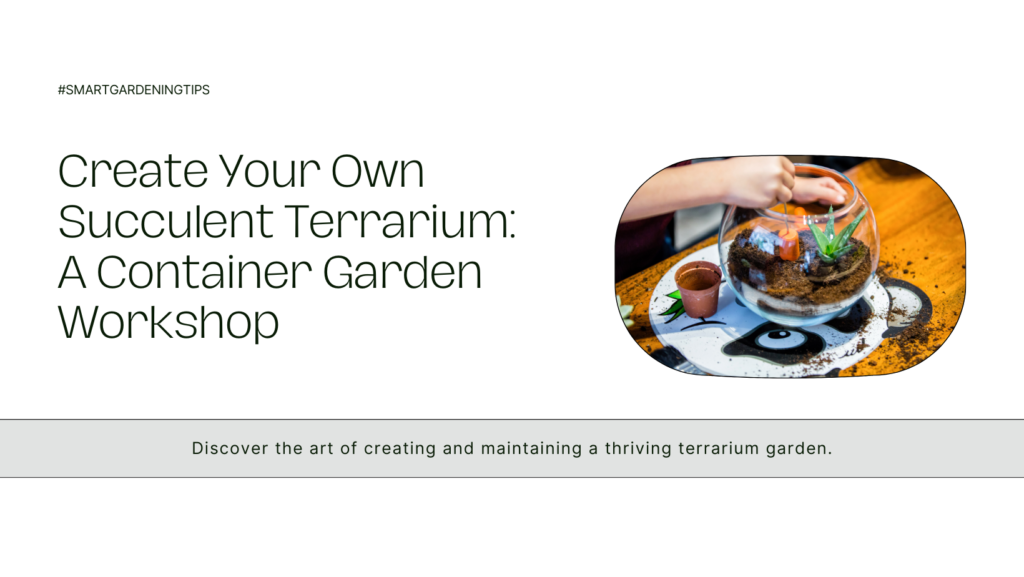
If you love succulents, why not create a beautiful terrarium? Start by finding a clear glass container, such as a fishbowl or a large mason jar. Fill the bottom with small rocks for drainage, then add a layer of activated charcoal. Next, layer potting soil on top and arrange your favorite succulents. Finish off with decorative elements like small stones or miniature figurines. Place your succulent terrarium in a bright spot and watch it thrive.
Vertical Herb Garden
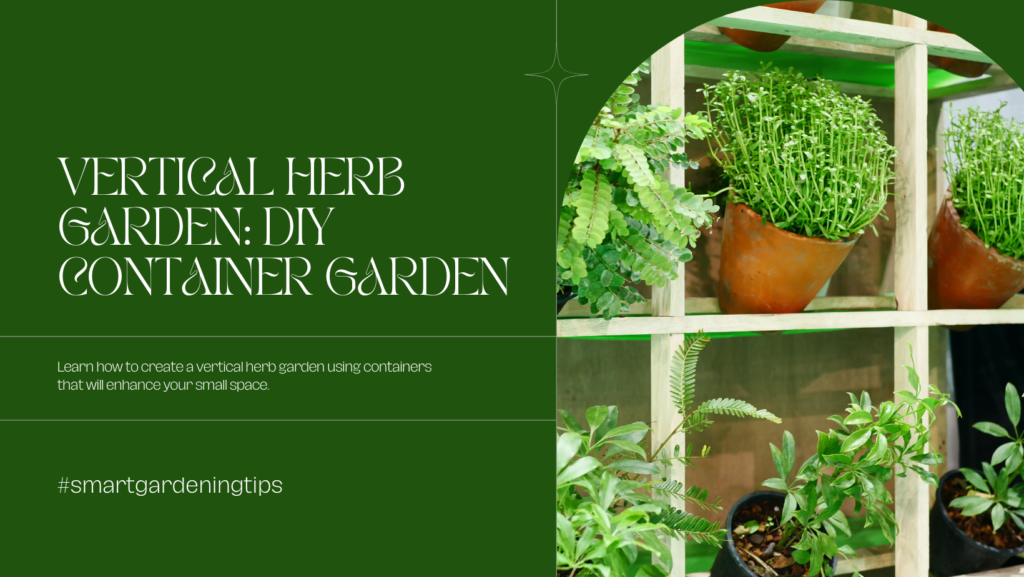
If space is limited, a vertical herb garden is a great solution. Upcycle an old wooden pallet by attaching small planting boxes to the slats. Fill each box with nutrient-rich soil and plant your favorite herbs. Hang the pallet vertically on a sturdy wall or fence, ensuring it receives adequate sunlight. Now you have a functional and space-saving herb garden that adds a touch of green to your outdoor space.
Recycled Tire Planter
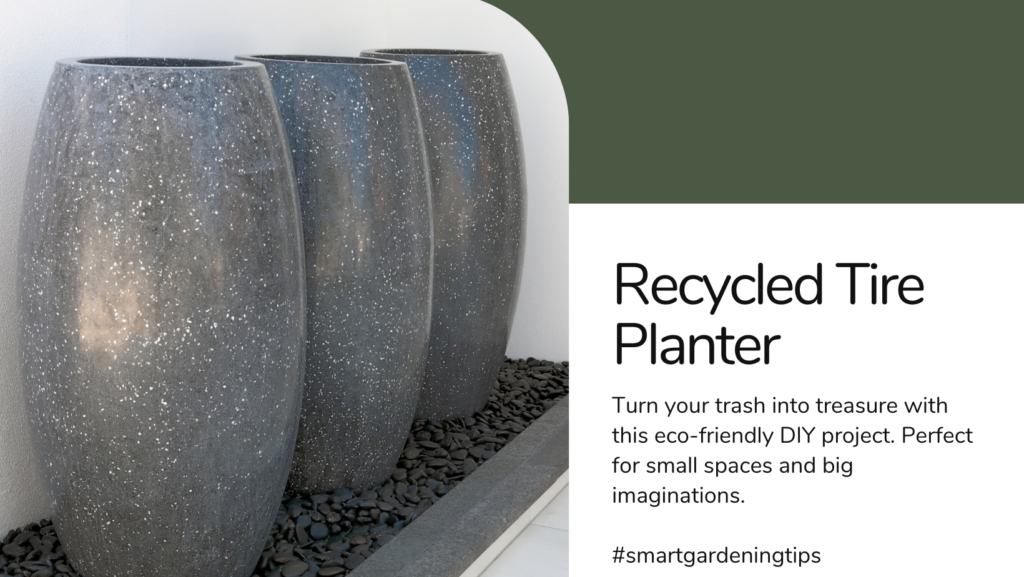
Repurposing old tires into planters is not only an eco-friendly option but also a creative way to add a rustic charm to your garden. Start by cleaning the tire thoroughly. Cut out the sidewall to create a large opening for planting. Fill the tire with a mix of soil and compost, then plant your chosen flowers or vegetables. To add visual interest, stack multiple tires or paint them with vibrant colors. Your recycled tire planters will undoubtedly become a focal point in your garden.
Teacup Succulent Garden
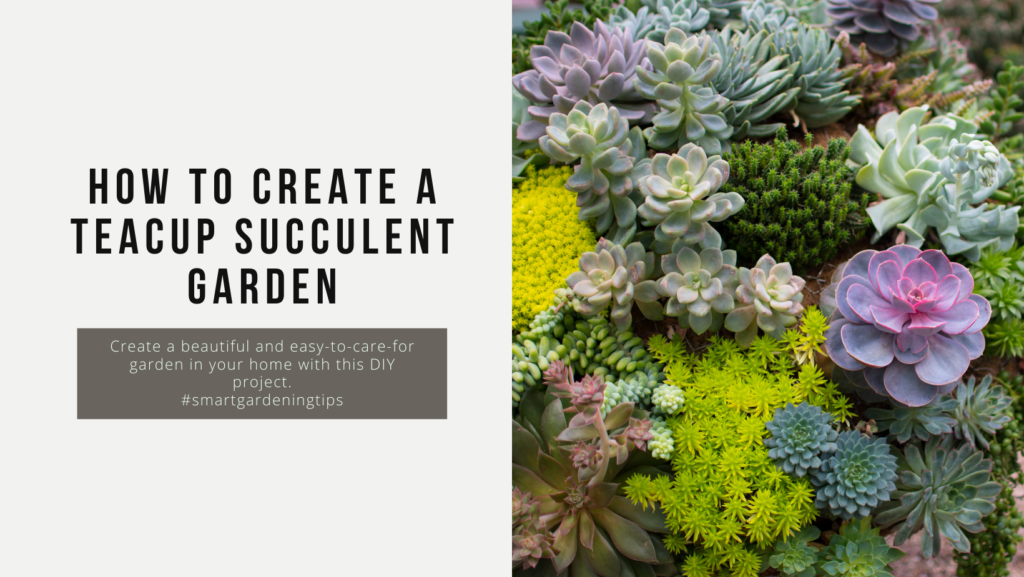
For a whimsical touch, create a teacup succulent garden. Find vintage teacups or small ceramic bowls with drainage holes. Fill each teacup with cactus or succulent soil, then carefully plant your succulents. Arrange multiple teacups on a decorative tray or along a windowsill for a charming display. These teacup gardens are perfect for adding a touch of greenery to small spaces or as centerpieces for special occasions.
| Benefits of DIY Container Garden Projects |
|---|
| 1. Personalized touch to your garden |
| 2. Repurposing containers reduces waste |
| 3. Budget-friendly garden solutions |
| 4. Unique and eye-catching designs |
Get creative with your container gardens by trying out these DIY projects. Repurposing containers for gardening not only adds beauty to your outdoor space but also adds a personal touch. Whether you choose to create a succulent terrarium, a vertical herb garden, a recycled tire planter, or a teacup succulent garden, these projects will undoubtedly enhance your gardening experience.
Maintenance Tips for Container Gardens
Once you have created your beautiful container garden, it’s important to provide proper maintenance to keep it looking lush and thriving. Regular maintenance tasks such as watering and fertilizing are essential to ensure the health and vitality of your plants. Here are some maintenance tips to help you care for your container garden:
Watering:
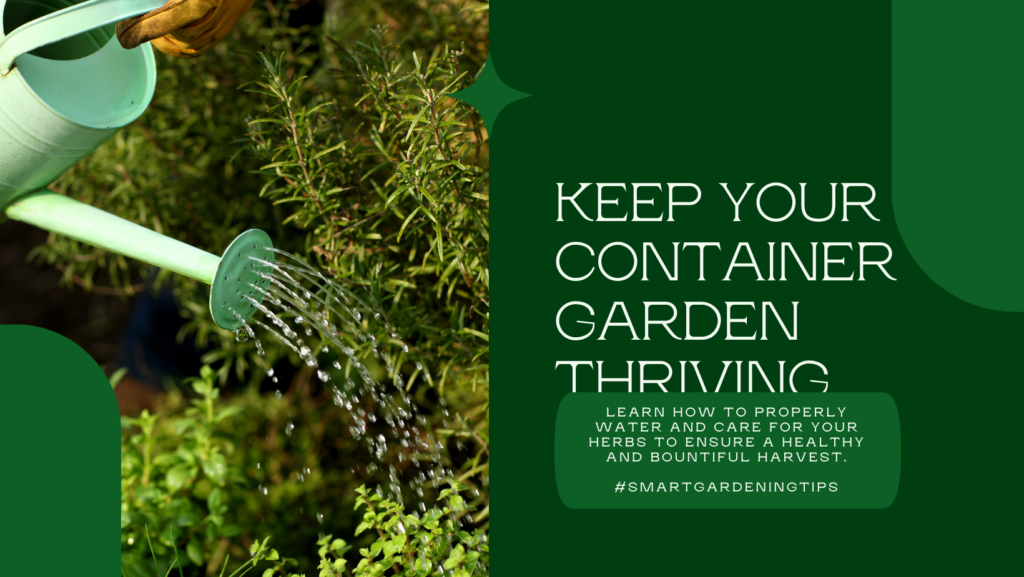
Proper watering is crucial for the success of your container garden. Depending on the type of plants you have, you may need to water them daily or every few days. Watering requirements can vary based on factors such as the type of plant, container size, and weather conditions. To determine when to water, simply check the moisture level of the soil by inserting your finger about an inch deep. If it feels dry, it’s time to water.
Here are some tips for watering your container garden:
- Water your plants deeply, ensuring that the water reaches the root zone.
- Avoid watering the leaves to prevent fungal diseases.
- Use a watering can or a drip irrigation system for accurate and controlled watering.
- Apply mulch on the soil surface to retain moisture and reduce water evaporation.
Fertilizing:
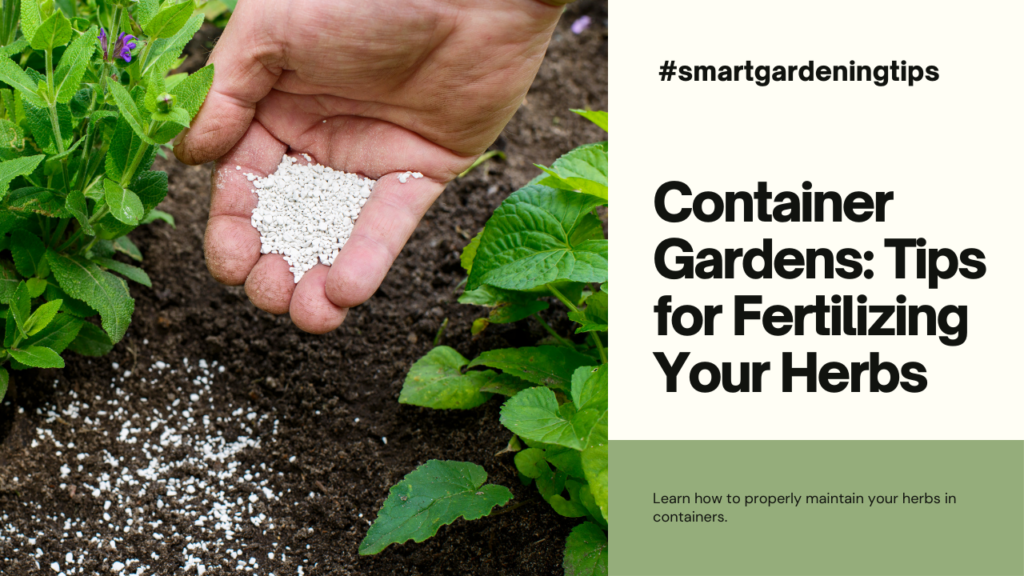
In addition to proper watering, fertilizing is essential to provide your container plants with the nutrients they need to thrive. Container plants often exhaust the nutrients present in the potting soil more quickly than plants in the ground.
Here are some tips for fertilizing your container garden:
- Choose a balanced liquid or granular fertilizer specifically formulated for container plants.
- Follow the recommended dosage instructions on the fertilizer packaging.
- Fertilize your plants regularly during the growing season, typically every 2-4 weeks.
- Alternatively, use a slow-release fertilizer that releases nutrients gradually over time.
Remember to read and follow the instructions provided by the fertilizer manufacturer for the best results.
Pruning:
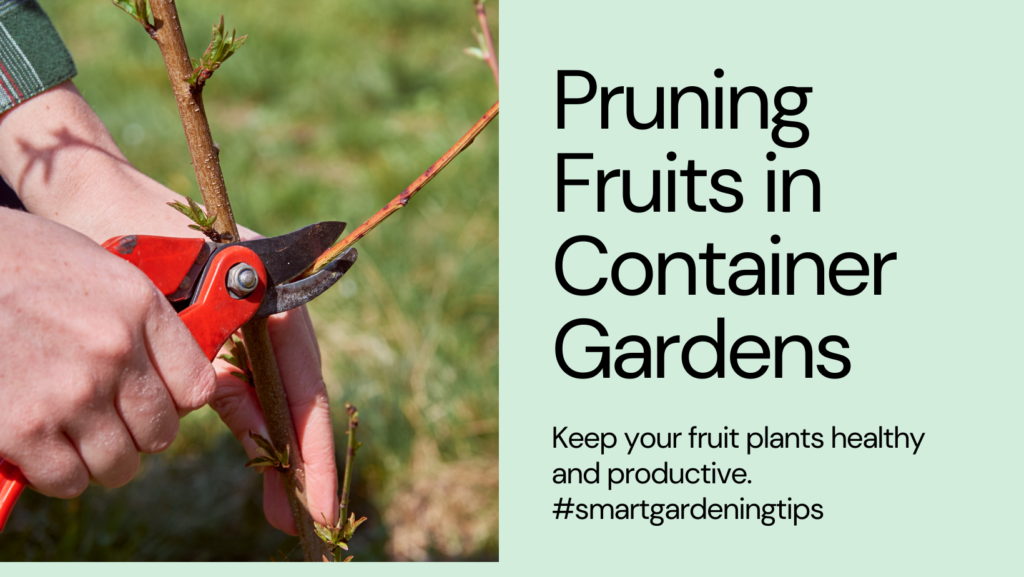
Regular pruning helps maintain the shape and appearance of your container plants. Pruning also promotes new growth and flowering. Remove any dead or yellowing leaves, as well as spent flowers to encourage continuous blooms.
When pruning, make sure to use clean, sharp tools to prevent the spread of diseases. Trim back any leggy or overgrown stems to maintain a compact and bushy shape.
Troubleshooting Common Issues:
Even with proper care, container gardens may face certain challenges. Here are some common issues and their solutions:
Pest Infestation: Keep an eye out for common pests such as aphids, spider mites, and mealybugs. Regularly inspect your plants and remove any pests manually or use an organic pesticide if necessary.
Disease: Fungal diseases like powdery mildew and root rot can affect container plants. Provide good air circulation and avoid overwatering to prevent these issues. If necessary, treat with appropriate fungicides.
Nutrient Deficiency: Yellowing leaves or poor growth can indicate a nutrient deficiency. Adjust your fertilizing routine and consider using a specialized fertilizer to address specific nutrient deficiencies.
By following these maintenance tips, you can ensure that your container garden remains healthy, vibrant, and blooming throughout the season.
Dealing with Pests and Diseases
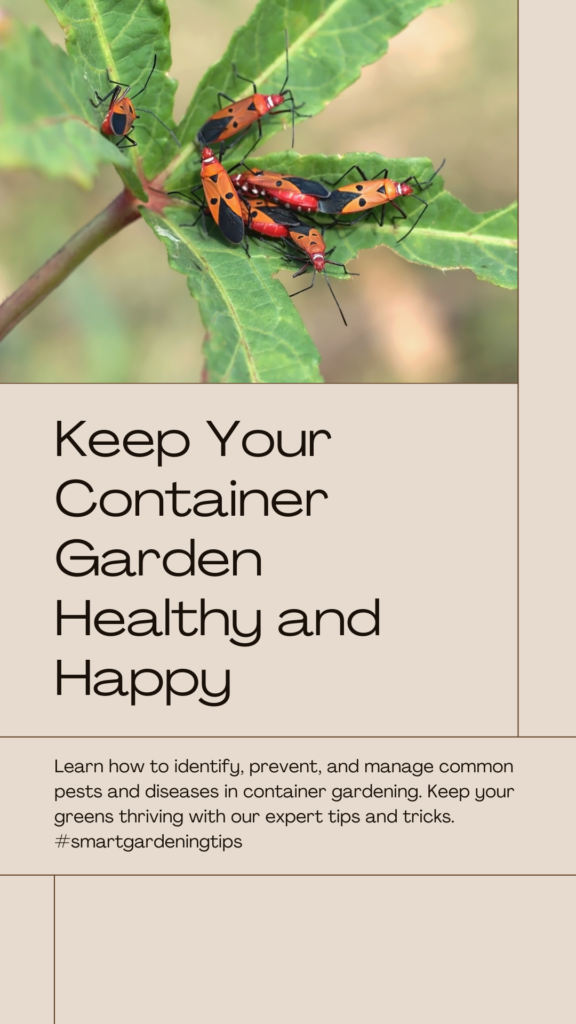
While container gardening offers numerous benefits, it is not immune to pests and diseases that can hinder the health and productivity of your plants. However, with proper prevention, identification, and treatment strategies, you can maintain a thriving and pest-free container garden.
Prevention
Prevention is key when it comes to dealing with pests and diseases in container gardens. Here are a few practices to consider:
- Start with healthy plants: Choose disease-resistant varieties and ensure the plants you purchase are free from pests or signs of disease.
- Maintain cleanliness: Regularly remove fallen leaves and debris from containers to eliminate potential hiding places for pests and disease-causing organisms.
- Rotate your plants: Avoid planting the same type of plant in the same container year after year. Rotating your plants can help prevent the buildup of pests and diseases that target specific plant species.
- Practice good hygiene: Wash your hands and tools before and after handling your plants to minimize the spread of pests and diseases.
Identification
Early identification of pests and diseases is crucial in preventing them from spreading and causing extensive damage. Some common pests and diseases to watch out for in container gardens include:
- Aphids
- Fungus gnats
- Powdery mildew
- Leaf spot
- Root rot
To properly identify pests and diseases, closely observe your plants for any changes in appearance, such as wilting leaves, discoloration, or the presence of insects. You can also consult gardening resources or seek advice from local garden centers or extension offices.
Treatment
Once pests or diseases are identified in your container garden, taking timely action is crucial. Here are a few treatment options to consider:
- Organic remedies: Use natural remedies like neem oil, insecticidal soap, or homemade sprays to combat pests and diseases.
- Integrated Pest Management (IPM): Implement IPM strategies, such as introducing beneficial insects or using physical barriers, to control pests and diseases.
- Fungicides and pesticides: In severe cases, you may need to resort to chemical treatments. Follow instructions carefully and use them as a last resort.
Remember to always read and follow the instructions on any treatment product, and use caution to protect yourself, your plants, and the environment.
Summary
Dealing with pests and diseases is an inevitable part of container gardening, but with proper prevention, identification, and treatment strategies, you can maintain a healthy and thriving garden. By practicing good gardening habits, closely monitoring your plants, and taking appropriate action when needed, you can enjoy the fruits of your labor while keeping pests and diseases at bay.
FAQ
Q. What is container gardening?
A. Container gardening is the practice of growing plants, herbs, and vegetables in containers rather than in the ground. It allows you to create a vibrant garden in small spaces, such as balconies, patios, and windowsills.
Q. What are the benefits of container gardening?
A. Container gardening offers several benefits, including flexibility in plant selection, easy mobility, and the ability to control soil conditions. It also provides an opportunity to repurpose containers and create unique and personalized gardens.
Q. How do I get started with container gardening?
A. To get started with container gardening, choose suitable containers, ensure proper drainage, select the right soil, and plan the layout of your container garden. Consider factors like sunlight, water requirements, and plant compatibility.
Q. Can I grow herbs in containers?
A. Absolutely! Herbs are ideal for container gardening. Some popular herbs to grow in containers include basil, rosemary, thyme, parsley, and mint. Just make sure to provide them with adequate sunlight, well-draining soil, and regular watering.
Q. What are some vegetable container garden ideas for small spaces?
A. In small spaces, you can grow vegetables like cherry tomatoes, lettuce, peppers, radishes, and green beans in containers. Choose compact varieties and use trellises or vertical gardening techniques to maximize space.
Q. Which flowering plants are suitable for containers?
A. Many colorful flowering plants thrive in containers, including petunias, marigolds, begonias, geraniums, and pansies. Select plants that suit your preferred color palette and provide them with well-draining soil and regular fertilization.
Q. What are the best plants for small spaces?
A. Some of the best plants for small spaces are dwarf or compact varieties such as dwarf sunflowers, mini roses, compact shrubs, and trailing vines. Additionally, consider using hanging baskets or vertical gardening techniques to maximize space.
Q. Any creative container ideas for my garden?
A. Yes! You can repurpose various objects as planters, such as old buckets, mason jars, teacups, or even old furniture pieces. Get creative and let your imagination run wild to create unique and personalized container gardens.
Q. Can I do DIY container garden projects?
A. Absolutely! DIY container garden projects allow you to personalize your space and save money. You can create hanging planters, vertical gardens, or even build your own raised garden beds. There are plenty of tutorials available online to guide you through the process.
Q. How do I maintain my container garden?
A. Proper maintenance includes regular watering, fertilizing, pruning, and ensuring proper drainage. Monitor your plants for signs of pests or diseases and take appropriate measures to address any issues that arise.
Q. How can I deal with pests and diseases in my container garden?
A. To deal with pests and diseases, practice preventive measures such as regular inspection, proper sanitation, and using organic pest control methods. For more severe infestations or diseases, consult a local gardening expert for appropriate treatment options.
Conclusion
Container gardening offers endless possibilities for bringing the beauty of nature into your home. Throughout this article, we have explored various ideas and techniques to help you get started on your container gardening journey. Whether you have a large backyard or just a small balcony, container gardening allows you to create a lush oasis that fits your space.
By choosing the right containers, selecting suitable plants, and providing proper care, you can create a vibrant and thriving garden in any setting. Container gardening not only adds beauty and freshness to your surroundings but also provides a sense of fulfillment and relaxation as you tend to your plants.
So why wait? Embrace the joys of container gardening and transform your home into a green sanctuary. Whether you want to grow herbs, vegetables, or colorful flowering plants, there is a container gardening option that suits your preferences and lifestyle. Start experimenting with different ideas, get your hands dirty, and let your creativity bloom with container gardening.


